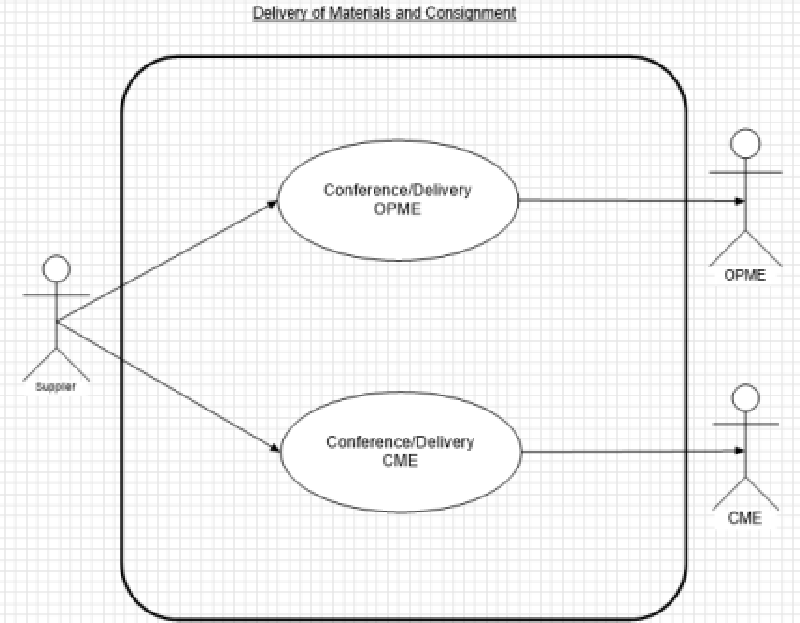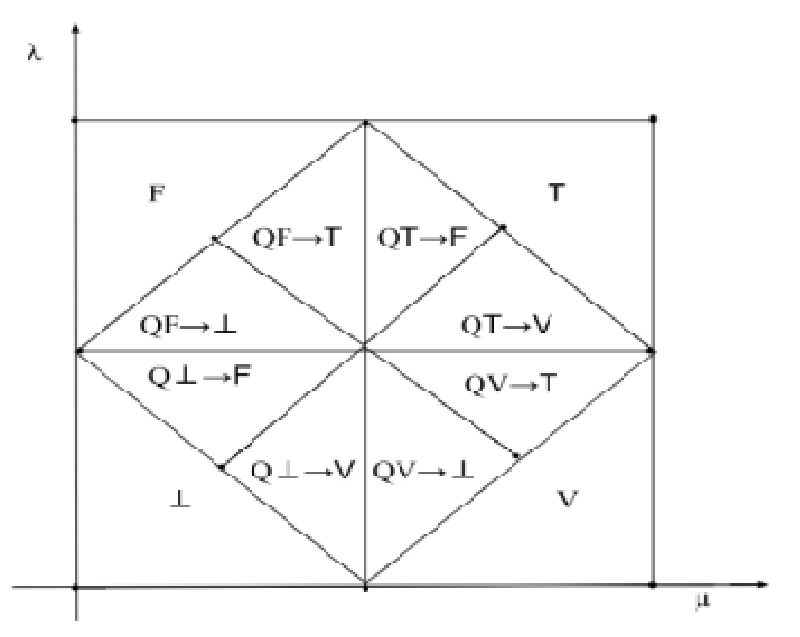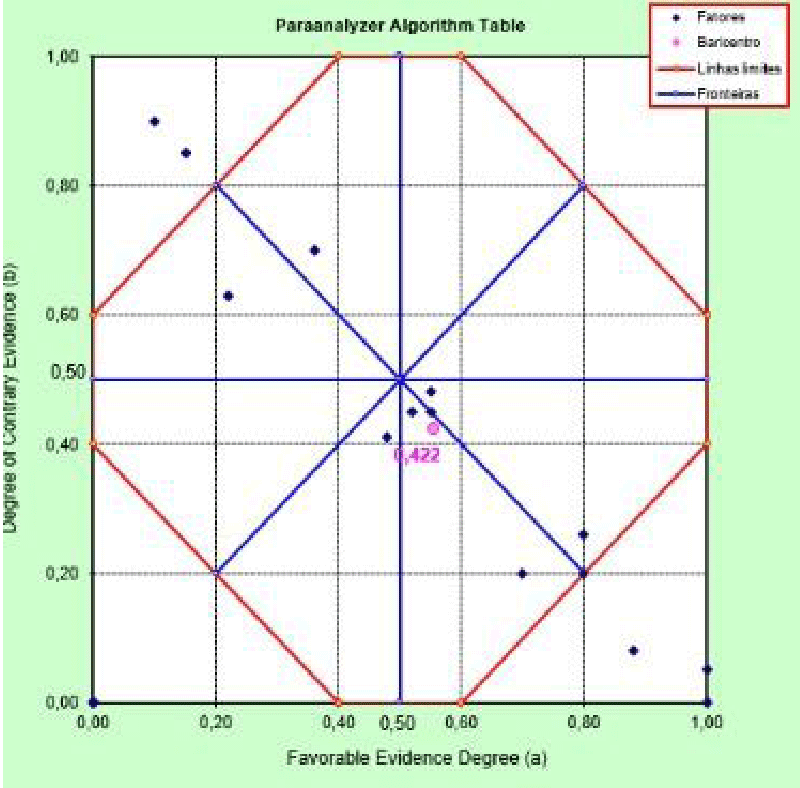Global Journal of Ecology
A dashboard proposal for pre-scheduling elective orthopedic surgeries in Brazil
Aparecido Carlos Duarte*, Jair Minoro Abe and Liliam Sayuri Sakamoto
Cite this as
Duarte AC, Abe JM, Sakamoto LS (2023) A dashboard proposal for pre-scheduling elective orthopedic surgeries in Brazil. Glob J Ecol 8(1): 053-0, Abe JM, Sakamoto LS (2023) A dashboard proposal for pre-scheduling elective orthopedic surgeries in Brazil. Glob J Ecol 8(1): 053-057. DOI: 10.17352/gje.000082Copyright
© 2023 Duarte AC, et al. This is an open-access article distributed under the terms of the Creative Commons Attribution License, which permits unrestricted use, distribution, and reproduction in any medium, provided the original author and source are credited.The procedure for receiving materials from the CME - Material and Sterilization Center, begins after the surgery is released by the agreement together with the approval of the supplier, once this is approved, the delivery of the materials to be used in the hospital will commence. This delivery may take place hours or even a day before the scheduled date since the materials need to be washed and sterilized, and in some cases, there is a lack of a certain instrument that may cancel or even postpone the surgery that is only identified when the articles are opened while in the operating room and even with the patient undergoing anesthetic induction, bringing inconvenience to the patient, the medical team and the hospital. In this article we will be proposing the construction of a Dashboard to help reduce the errors or problems encountered during the scheduling of surgeries to be performed in Hospitals in Brazil, we are only dealing with Elective surgeries, those schedules that depend on third-party materials for their performance.
Introduction
There are several difficulties that we can find in the conference of hospital materials that carry out surgery, where Elective Orthopedic Surgeries will be dealt with specifically, the difficulty of training the Central Sterile Services Department (CSSD) staff - (Material and Sterilization Center), due to the great diversity of equipment and materials from numerous different suppliers makes it difficult to recognize them upon receipt due to the verification being carried out visually. The surgeries are of different complexities and needs, and use different materials such as instruments, etc. This material is accompanied by a document called a voucher which contains the lot number, references, and quantity of each material being delivered example: 5 locking screws of 3 1/2 cm in diameter, 6 cutting guides, drills of different diameters 9 to 22, cutting blocks, etc. There is no standardization between hospitals regarding receipt, each one has its own document for receipt.
Other factors that lead to serious errors are the amount of insufficient personnel for the required demands, where different people receive the materials (there should be only one person qualified for this purpose), which often leads to errors.
An insufficient number of personnel for the required demands also makes it difficult at the time of receipt, where different people receive the materials, not having a designated person to receive them, which can lead to a level of error. There is also the possibility of a third verification that could occur at the time of washing these materials, even so, we would still run into the problem of receiving as it is not a single person who performs this work and make a rotation in order for everyone to learn. When finding a discrepancy in relation to what is related to the voucher and the visual (done by the CME person) we try to discuss it with the person who is making the delivery, but this is not the specialist either, but the driver who may or may not due to constant deliveries or training, know how to inform if what is being seen and what is described in the voucher.
Material conference
The material to be used for the surgical procedure arrives at the hospital on the eve of the surgery, where it undergoes a verification process upon receipt by the MSC employee, who visually checks the voucher that the company forwards and then proceeds to the process washing, sterilization, packaging and labeling with the patient’s name and company.
At this moment, it may be that when receiving the material due to the lack of knowledge of the recipient, the lack of some material/instrument may still go unnoticed.
The verification of lack of material/instruments for the surgical procedure will only occur when the boxes are opened in the operating room, which can, depending on missing and/or exchanged instruments, cancel the surgery, causing its postponement. There may be an even bigger problem when the patient is already anesthetized, with the room blocked where he is until he can be removed to the Post-Anesthesia Care Unit (PACU) - Anesthetic Recovery room, impairing the logistics of the rooms, and preventing their use.
Removal of material by room circulator
The material is removed from the CSSD by the room attendant, who can be a nursing assistant or even a nursing technician, or even a nurse.
There are other materials that are also used in surgery that come from another OPME department (Orthoses, Prostheses, and Special Materials) used in medical intervention, surgeries, dentistry, for diagnoses or therapy.
These materials can also suffer from errors as occurs with the material delivered to the CME as mentioned in section 1.1 Material Conference.
Objectives
In view of the current problems that involve orthopedic surgery in Brazilian hospitals reported, it is proposed in the first step, the elaboration of a Dashboard considers the scheduling with medical agreements, Hospital (CME, Pharmacy, and Surgical Scheduling), suppliers of materials, patient/surgeon interaction, as well as monitoring the progress of the process (Table 1).
The information will be entered manually by the attendant of the surgical scheduling by the CME and pharmacy employees. The CME will inform the total preparation time of the material (purging, preparation of materials, preparation of surgical instruments, sterilization, assembly of carts for surgery, distribution of sterilized materials, and storage). Where the pharmacy will inform the date, time, and materials that will be delivered, the attendant will inform the date of release of the surgery as well as the date for the surgery (effectively scheduled at the Surgical Center).
Once the materials are inside the operating room, the process of opening the instruments and all the materials (cutting guides, drills, among others) will start with the room attendant so that the surgical instrument technician can carry out the necessary checks.
This will verify the conditions of the materials, namely: properly sterilized materials, there is no dirt, the control integrators are properly turned, and there is no instrument to be used in the surgery.
If there is any problem, the main surgeon must be notified, depending on what is found, the surgery may be rescheduled, canceled, or even interrupted until the problem is resolved.
In case of problems and the patient is already in Anesthetic Induction (anesthetized), he cannot be removed from the operating room until he regains consciousness and then be moved to the PACU (post-anesthesia recovery room).
Inflow/output of material in the surgical center
In Figure 1 shown above we demonstrate the flow of receipt of materials by the CME and OPME, performed between the company supplying the materials and inputs and the hospital. This conference is held visually between a list provided by the company and visually by the people of the hospital.
Evidential annotated paraconsistent logic Eτ
The logic of Aristotle is a tool for right thinking. The propositions raised as an argument and inferred in the conclusion are based on observations [1]. Therefore, the conclusion and the propositions cannot be treated as only truth or falsehood, but always observe, seeking to feed the reasoning to knowledge. The propositions raised from reality must follow three Fundamental Principles of Logic: Principle of identity (X is equal to itself and unlike all the rest); Principle of noncontradiction (no statement can be true and false at the same time); Principle of excluded third (there is no third possibility, besides true and false). Paraconsistent Logic is among the non-classical logical calla [2] since it contains provisions contrary to some of the basic principles of Aristotelian Logic, such as the principle of contradiction. From the Aristotelian point of view, the three principles of logic prevail. The predecessors of the Paraconsistent Logic were the Polish logician J. Łukasiewicz Lvov in 1878 and the Russian philosopher N.A. Va- silév. Vasilév baptized a logic that became known as imaginary. Łukasiewiczanounced the trivalent Logic: True, False, Possible. The first logical to structure a paraconsistent propositional calculation was the Polish S. Jaśkowski, the disciple of Łukasiewicz. The term “Paraconsistent” literally means ‘next to consistency’. However, in 1976 the philosopher-scientist Francisco Miró Quesada called the logic of “Paraconsistente”. According to Paraconsistent Logic, a sentence, and its negation may both be true (Newton
C. A., Jair Minoro Abe, Afrânio Carlos Murolo, and João I. da Silva Filho in 1999). In the mid-1950s, the Polish S. Jaskowski and the logical mathematician Newton C. A. da Costa proposed the contradiction in the logical structure and became known as the founders of Paraconsistent Logic [2].
Logic Eτ in the day-to-day of our reality in front of innumerable sources of information, the contradiction constantly occupies a space, bringing uncertainties that will culminate soon or in future contestations. In activities such as the analysis of clinical exams, politics, in the analysis of legal processes, the measurement of software [1,3,4], and technical support, in the care of insurers [5], where at least two specialists are involved [6], there will always be different points of view. In the case of a system with artificial intelligence [7], neural networks [8], also known as “machine learning” [9,10], which starts from the study of pattern recognition [11], the appearance of contradiction in logical reasoning is inevitable when we try to reflect human behavior. In response to the contradiction, we have the Logic Eτ. The Logic Eτ is a class of Paraconsistent Logic that works with propositions of type p
(μ, λ), where p is a proposition and (μ, λ) indicates the degrees of favorable evidence and contrary evidence, respectively. The pair (μ, λ) is called the annotation constant, with the values of μ and λ being limited [12,13], between 0 and 1. The evidence is reflected in the collection of the value or degree, which is a number found in the set of real with an interval between 0 and 1. Given the characteristics to meet an analysis in a given proposition, we were able to extract that degree or value. The source of information can be a specialist in software measurement, where the value extracted is based on the level of knowledge of this specialist, the experience of count counts, or even the experience gained in his profession of function point analyst. So, thinking about the paraconsistent analysis system that addresses uncertainties, one must start with repository modeling containing knowledge of the information collected from the specialists in function point analysis. One way of representing the Logic Eτ that allows one to perceive the real reach and thus extract results to support the decision-making [14-20] is faced with the understanding of the diagram and its degrees of certainty and uncertainty (Figure 2,
(Table 2), grouped in extreme states identified in the results
(1 to 4) and non-extreme states displayed in the results (5 to 12),
with adjustable control values representing limit values:
C1 = C3 = ½ e C2 = C4 = -½; C1: Vcve
= maximum value of certainty control; C2: Vcfa = minimum value of certainty control; C3: Vcic
= maximum value of the uncertainty control; C4: Vcpa = minimum value of the uncertainty control;
In the representation of the diagram in Figure 2, the following understandings with symbols [2] and their 12 possible results were used, being 1 to 4 extreme states and 5 to 12 non-extreme states:
Analysis
For the creation of Table 3, we followed the elective orthopedic surgeries performed in the period from January to December 2020, grouped by surgeons, totaling by number of surgeries performed within the month having in the yellow cell its totals of the year subtracting those canceled when any. In the blue line we have the total of surgeries performed in the month ending with the total of surgeries performed by the team
Results and discussion
Application of paraconsistent logic
Proposition: Elective Orthopedic Surgery Should be Canceled (Figure 3).
Application of paraconsistent logic for decision making (practicable)
Conclusion
Two points were analyzed that we consider critical for performing a surgery as shown in Table 4, namely, Factors 1 and 2, at this point we verified the importance of using Paraconsistent Logic Et [13] in decision-making, helping in the search for answers for canceling or rescheduling Elective Orthopedic Surgeries at the time of surgery, when the patient is already inside the operating room and even if they have already undergone Anesthetic Induction (anesthetized), performing prior monitoring of the process through a DASHBOARD [2,11] where all Those involved can monitor the deliveries of requested materials, avoiding surprises such as lack of materials, late deliveries, among others that were not taken into account in this article, leaving them for later studies.
We thank the research group Paraconsistent Logic and artificial intelligence maintained by Paulista University and conducted by researcher Dr. Abe. This study was financed in part by the Coordination for the Improvement of Higher Education Personnel - Brazil (CAPES) -Financial Code 001.
- Samudra, Riet V, Demeulemeester, Cardoen, Vansteenkiste, Rademakers M. Samudra C. VanRiet E Demeulemeester B. Cardoen N. Vansteenkiste FE. Rade makers Scheduling ORs: Achievements, challenges and pitfalls Scheduling Diary. 2016; 19(5):493-525.
- Turunen E, Miettinen M, Setälä L, Vehviläinen-Julkunen K. Elective Surgery Cancellations During the Time Between Scheduling and Operation. J Perianesth Nurs. 2019 Feb;34(1):97-107. doi: 10.1016/j.jopan.2017.09.014. Epub 2018 Apr 17. PMID: 29678317.
- Ferreira J, Boto P. Cancelamentos de Cirurgias Eletivas no Próprio Dia da Operação num Hospital Português: Um Ano em Perspetiva [Cancellations of Elective Surgeries on the Day of the Operation in a Portuguese Hospital: One Year Overview]. Acta Med Port. 2021 Feb 1;34(2):103-110. Portuguese. doi: 10.20344/amp.13437. Epub 2021 Feb 1. PMID: 33641703.
- Chalya PL, Gilyoma JM, Mabula JB, Simbila S, Ngayomela IH, Chandika AB, Mahalu W. Incidence, causes and pattern of cancellation of elective surgical operations in a university teaching hospital in the Lake Zone, Tanzania. Afr Health Sci. 2011 Sep;11(3):438-43. PMID: 22275936; PMCID: PMC3261008.
- Sarang B, Bhandoria G, Patil P, Gadgil A, Bains L, Khajanchi M, Kizhakke Veetil D, Dutta R, Shah P, Bhandarkar P, Kaman L, Ghosh D, Mandrelle K, Kumar A, Bahadur A, Krishna S, Gautam KK, Dev Y, Aggarwal M, Thivalapill N, Roy N; IndSurg Collaboration. Assessing the rates and reasons for elective surgery cancellations on the day of surgery: a multicenter study of urban Indian hospitals. World J Surg. 2022 Feb;46(2):382-390. doi: 10.1007/s00268-021-06364-1. Epub 2021 November 16th. PMID: 34787712; PMCID: PMC8724145.
- Spratt B, Kozan E, Sinnott M. Analysis of uncertainty in the surgical department: durations, requests and cancellations. Aust Health Rev. 2019 Jan;43(6):706-711. doi: 10.1071/AH18082. PMID: 30185353.
- Surgical cancellations: a review of elective surgery cancellations at a tertiary pediatric institution.
- Boudreau SA, Gibson MJ.J Perianesth Nurses. 2011 Oct;26(5):315-22. doi:10.1016/j.jopan.2011.05 003.PMID: 21939884
- Chiu CH, Lee A, Chui PT. Cancellation of elective operations on the day of intended surgery in a Hong Kong hospital: point prevalence and reasons. Hong Kong Med J. 2012 Feb;18(1):5-10. PMID: 22302904.
- Dimitriadis PA, Iyer S, Evgeniou E. The challenge of cancellations on the day of surgery. Int J Surg. 2013;11(10):1126-30. doi: 10.1016/j.ijsu.2013.09.002. Epub 2013 Sep 12. PMID: 24035905.
- Sanjay P, Dodds A, Miller E, Arumugam PJ, Woodward A. Cancelled elective operations: an observational study from a district general hospital. J Health Organ Manag. 2007;21(1):54-8. doi: 10.1108/14777260710732268. PMID: 17455812.
- Caesar U, Karlsson J, Olsson LE, Samuelsson K, Hansson-Olofsson E. Incidence and root causes of cancellations for elective orthopaedic procedures: a single center experience of 17,625 consecutive cases. Patient Saf Surg. 2014 Jun 2;8:24. doi: 10.1186/1754-9493-8-24. PMID: 24955115; PMCID: PMC4064269.
- Armoeyan M, Aarabi A, Akbari L. The Effects of Surgery Cancellation on Patients, Families, and Staff: A Prospective Cross-Sectional Study. J Perianesth Nurs. 2021 Dec;36(6):695-701.e2. doi: 10.1016/j.jopan.2021.02.009. Epub 2021 Sep 24. PMID: 34565663.
- Abe JM. Evidential Paraconsistent Logic Et.: Monograph. 2009.
- Abe JM. Paraconsistent Intelligent Based-Systems: New Trends in the Applications of Paraconsistency, editor, Book Series: “Intelligent Systems Reference Library”, Springer- Verlag (Vols. 94, ISBN:978-3-319-19721-0, 306 pages). Germany. 2015.
- Abe JM. Annotated Paraconsistent Logic Evidential Et.: Santos: Communicate. 2011.
- Carvalho FR. Decision Making with Annotated Paraconsistent Logic Tools. Sao Paulo: Edgard Blucher Ltda. 2011.
- Beliën J. Constructing cyclical master surgery schedules with level bed occupancy European Journal of Operational Research. 2007; 176(2):1185-1204
- Bovim, Christiansen, Yellow Sea, Range, Hellemo, TR Bovim, M Christiansen, AN Gullhav, TM Range, L Hellemo. Scheduling of stochastic master surgeries European Journal of Operational Research. 2020; 285(2):107-111; 695-711.
- Denton, Miller, Balasubramanian, Huschka, BT Denton, AJ Miller, HJ Balasubramanian, TR Huschka. Optimal Operating Room Allocation for Operating Rooms Under Uncertainty Operations Research. 2010; 58 (4-part-1):802-816
- Macario. Macario How much does a minute of time in the operating room cost? Revista de Anestesia Clínica. 2010A.; 4(22): 233-236.
Article Alerts
Subscribe to our articles alerts and stay tuned.
 This work is licensed under a Creative Commons Attribution 4.0 International License.
This work is licensed under a Creative Commons Attribution 4.0 International License.





 Save to Mendeley
Save to Mendeley
